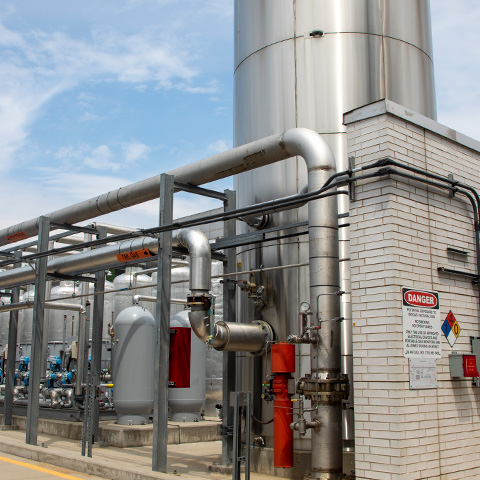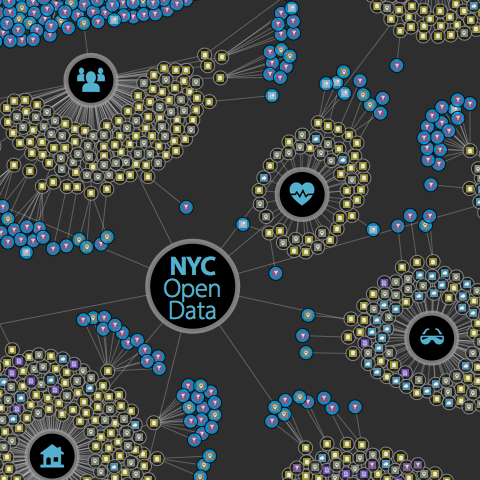
 Environmental Protection311
Environmental Protection311 Search all NYC.gov websites
Search all NYC.gov websites
Resource Recovery
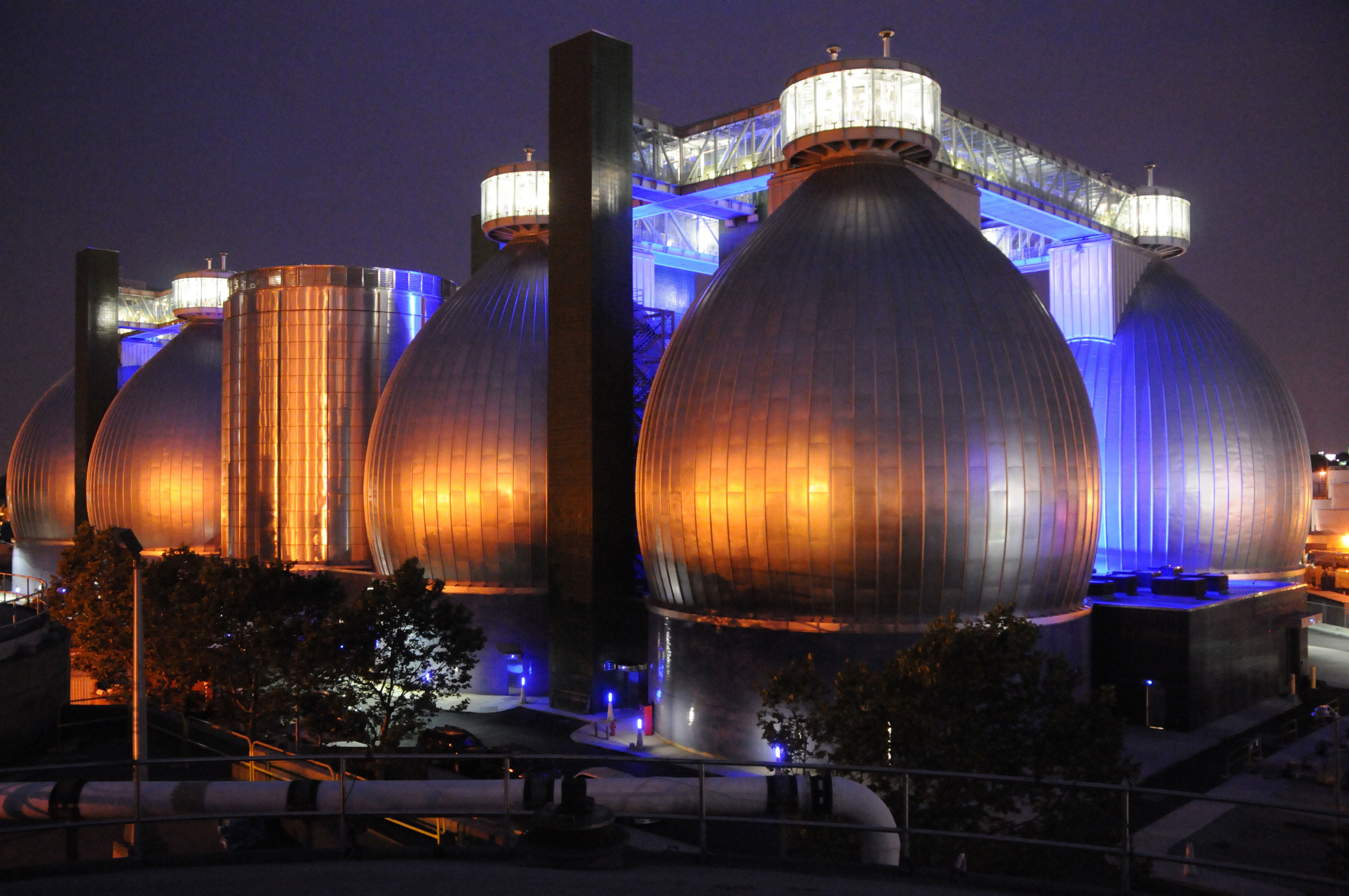
Circular Economy
DEP is advancing New York City’s circular economy by recovering energy and nutrients from NYC’s organic waste, including food scraps and wastewater. A circular economy is a system focused on reusing materials instead of discarding them, with the goal of recovering materials previously seen as waste. At our Newtown Creek Wastewater Resource Recovery Facilty, we process food scraps in our giant mechanical stomachs (digesters) alongside sludge. This biological process produces biosolids, which can be used as fertilizer and biogas, a sustainable energy source.
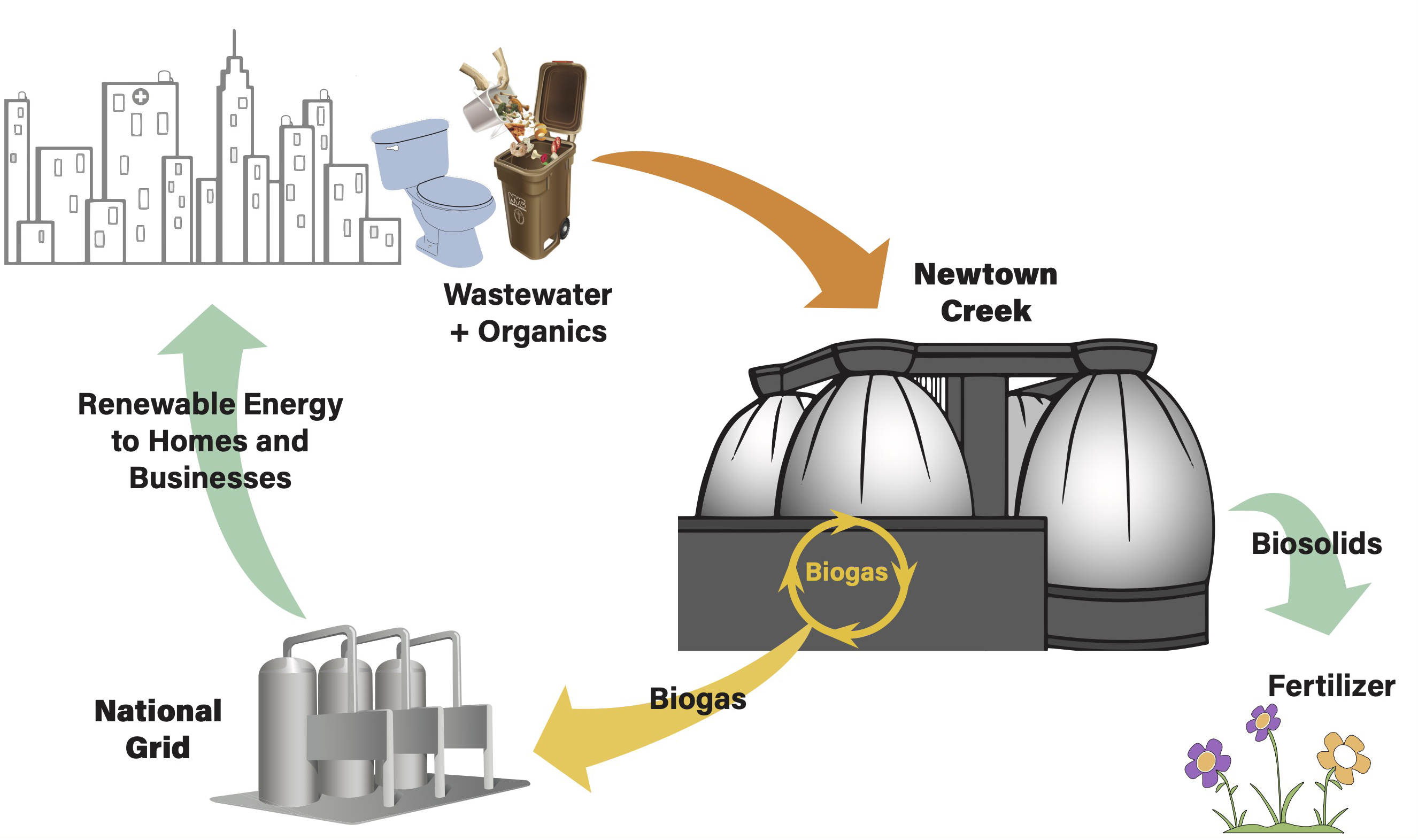
Diverting Food Scraps from Landfills
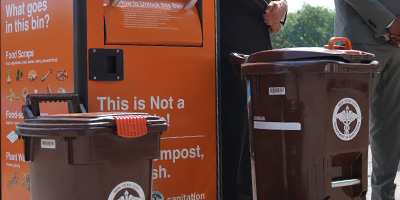

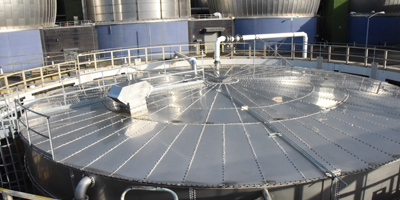
Foods scraps that go to landfills decompose and release methane (a potent greenhouse gas). At Newtown Creek WRRF, our giant mechanical stomachs are co-digesting the organic materials in wastewater AND in processed food scraps, allowing us to capture more energy AND reduce greenhouse gas emissions, including methane.
Read more about Closing the Loop: When Wastewater Treatment Becomes Resource Recovery.
Biogas-to-Grid
We partnered with National Grid to convert biogas into clean, renewable heat. This innovative renewable energy project reduces greenhouse gas emissions and improves air quality. From April 2023 to January 2025, we produced nearly 355,000 MMBtu of Renewable Natural Gas (RNG), which is enough to meet the annual heating requirements of over 7,400 homes.
Biogas-to-Grid
View the real-time status of the biogas-to-grid system and quarterly data reporting!
One Water NYC
A water management approach where all water has value & should be maximized in the water system.
NYC Open Data
Access more than 1,400 NYC data sets for free, at any time via the NYC Open Data portal.
OneNYC
New York City’s Green New Deal and vision for a better world.


